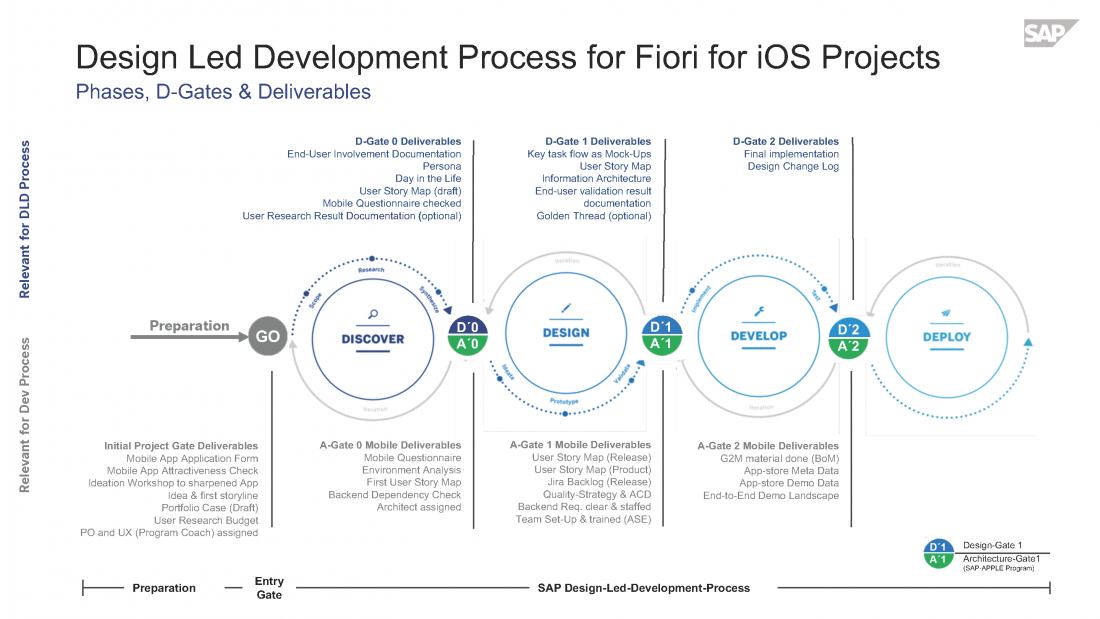Design Led Development Process (Service on hold)
Intro
A Binding Development Process
The Design Led Development Process (DLD) helps to ensure projects provide a great user experience.
The process has three main phases – Discover, Design, and Develop – each of which ends with a D-Gate (Design Gate) that must be passed before the next phase can start.
For more details on the standard DLD process, as rolled out by SAP Design, please visit: https://experience.sap.com/internal/fiori-design-web/design-led-development-process/.
D-Gates – General Guidelines
The following app team roles are required to participate in the D-Gates:
- D-Gate 0: PO, UX Designer, User Researcher
- D-Gate 1: PO, UX Designer, Lead Architect
- D-Gate 2: PO, UX Designer, Lead Architect, Lead Developer (optional)
Before each D-Gate, the app team must ensure all members are are aligned regarding the content that will be shown during the D-Gate.
Deliverables & Execution
The following documents are required:
- Persona (Download Template)
- “Good Draft” User Story Map (Download Template)
- End User Involvement Documentation (Download Template)
- Day in a Life, including Environment Analysis (Download Template)
- Completed Mobile Checklist (Download Template)
Optional:
- User Research Results Documentation
Results and Consequences
The following D-Gate results are possible:
- Passed. The app project can advance to the next phase of the DLD
- Not passed. The app project CANNOT advance to the next phase of the DLD
The result should be given at the end of the D-Gate. If this is not possible, the final D-Gate result needs to be provided within 3 working days.
Deliverables & Execution
The following documents are required:
- Key task flow as Mock-Ups
- “Final” User Story Map
- Information Architecture
- End-user validation result documentation
Optional:
- Golden Thread
Results and Consequences
The following three D-Gate results are possible:
- Passed. The app project can advance to the next phase of the DLD
- Not passed. The app project CANNOT advance to the next phase of the DLD
- Passed with Conditions. The app project can advance to the next phase of the DLD, but all issues flagged during the review will need to be resolved by the next stage, and will be checked during D-Gate 2.
The result should be given at the end of the D-Gate. If this is not possible, the final D-Gate result needs to be provided within 3 working days.
Deliverables & Execution
The following documents are required:
- Demo IPA file, plus needed login information
- Log of UX changes from D-Gate 1
SAP Design also needs to be able to test the mobile app at least 3 days before the D-Gate meeting.
Results and Consequences
The following three D-Gate results are possible:
- Passed. The app project can be released
- Not passed. The app project CANNOT be released
- Passed with Conditions. The app team needs to resolve all issues flagged during the review before RTC, and must present a demo to SAP Design before a release decision is made
The result should be given at the end of the D-Gate. If this is not possible, the final D-Gate result needs to be provided within 3 working days.


 Your feedback has been sent to the SAP Fiori design team.
Your feedback has been sent to the SAP Fiori design team.